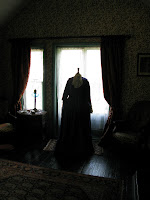Lemos is Greek painter scupltor and installation artist. Her recent work has explored the narrative of journeys and the displacement and the politics of forced migration.
Navigating the Dark is a three part exhibtion in Athens,Crete and London, The Crypt gallery.
This vaulted underground burial space is a very eerie and highly charged venue in itself. Combine it with this work of Lemos and terror come to mind !
Found objects, three actual boats, are filled with steel structures of snakes, black birds and figures. Voices seemingly come out of the walls and behind you as walk around the space.
It is un - nerving and left me feeling very unsettled. Not the most pleasant experience, however, the artist has set out to envelope us in these very notions of fear and dread. After all, think about the boat people, for example, who risked their lives to have the slimmest possibility of a new one.
How full of fear must they be in the middle of the ocean in a boat full of holes? I am sure this exhibition would not conjure up for them anywhere near the wretchedness and horror they have been through and indeed go through to escape.
Aside from the drama of this exhibtion, the quality of workmanship and the presentation is brilliant. The film which is featured depicts materials such as salt , primitive shaped wood feature strongly alongside steel mesh and lavae shapes. The constant whispering and noise of insects sucking away adds to the atmosphere and resonates with the building itself.
This exhibition has you looking over your shoulder constantly - even the invigilator said he does not enjoy turning out the lights !

















































